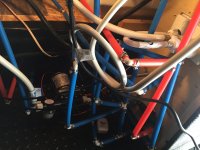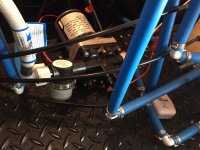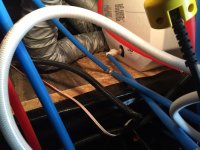It would seem to me if they are going do this Yetti package thing...they would include everything needed to make it work, instead of forcing you to rig up some "Rube Goldberg" junk to get you by...Just my opinion...Don
Maybe it would help to think about what the objective is. I'll throw out some guesses in part based on experience.
overnight low of 20 (F) - The heated underbelly provides protection down to some temperature below freezing, but not way below - assuming you are running your furnace a reasonable amount (some people try to save on propane, so this doesn't always work well).
overnight low of 15 (F) - The Yeti option provides protection to a lower temperature (not sure how low). Again, you have to run the furnace to pump heat. The tank heaters will protect at much lower temps. Fresh water system probably will work at this temp.
overnight low of 10 (F) - My guess is you'd have to start adding mods in addition to the Yeti option and running the furnace.
overnight low of -20 to -30 (F) - If you want to camp in extreme conditions, like -20 or -30 (F), there is to my knowledge no coach that will do the job without extensive mods. There's an expensive motor coach parked in the site next to ours and he's had to do quite a bit of work to keep the water running - and has experienced a number of mornings without running water - and worse.
So in my opinion, how many additional steps you have to take depends largely on how cold you expect it to get. I've installed heat tape on all of my water lines (except washer), and I hang lights, and have a heated mini-skirt area under the trailer, and extra insulation, and a heated water hose. But I want running water in the morning even if it goes down to -30 (F).









